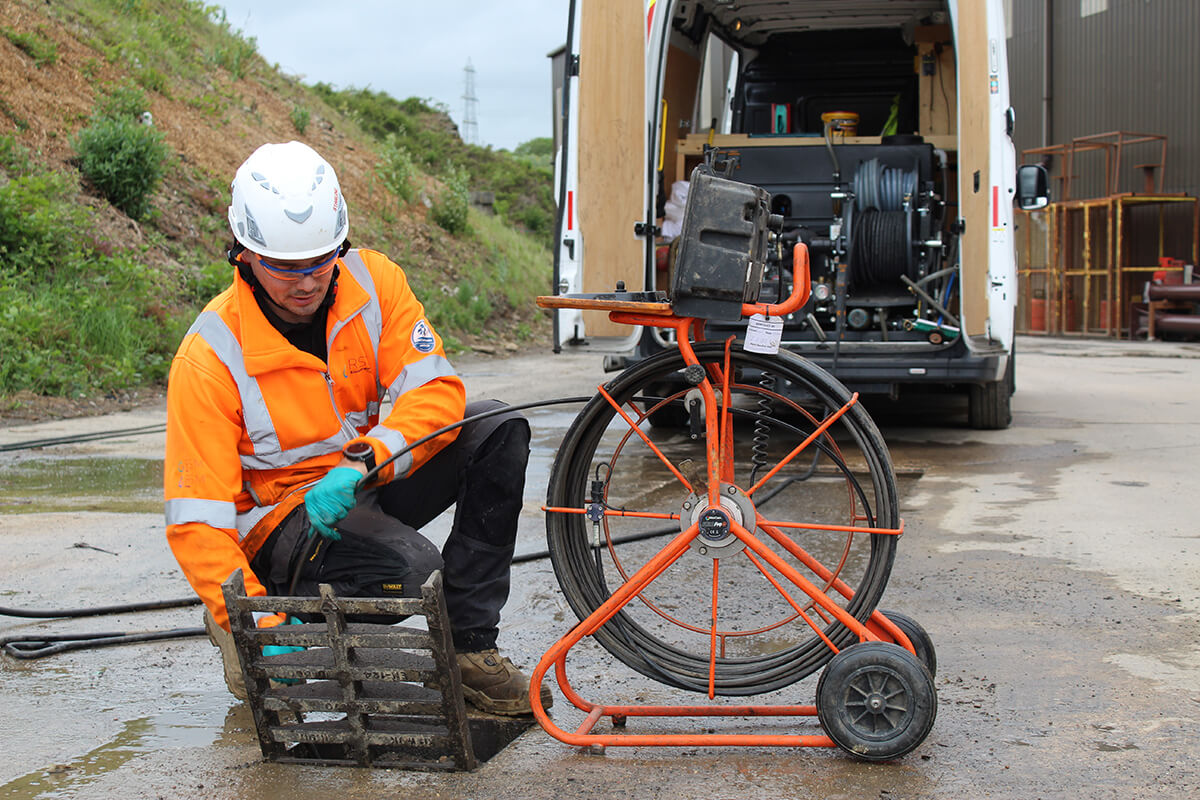Why proactive drainage management is critical for preventing drain blockages on construction sites.
Drain blockages might not be the most visible threat on a construction site, but left unchecked, they can cause costly delays, environmental damage and even health and safety hazards. Whether it’s a major development or a short-term project, keeping your drainage systems flowing freely is key to maintaining operational efficiency and regulatory compliance.
At RSM Drain Solutions, we’ve seen firsthand how small issues with drainage can escalate into bigger problems. From standing water and silt build-up to full-blown flooding and pollution incidents, poor drain management is one of the most common and preventable risks on site. This guide outlines best practices to help you avoid blocked drains and maintain clear, compliant systems throughout your project.

1. Start with a drainage plan.
Before you even break ground, ensure your drainage needs are part of your site planning.
- Map existing drainage systems, including foul, stormwater and combined networks.
- Plan for temporary drainage during enabling and groundworks phases.
- Consider how changes in topography, hard surfacing and site activity will affect surface water runoff.
A clear plan helps you anticipate pressure points and avoid reactive fixes down the line. At RSM, we work with contractors during pre-construction to develop practical, site-specific drainage strategies and ensure they’re built into your environmental management plans from day one.
2. Install and maintain proper drain protection.
Construction sites are magnets for mud, silt, cement, oils and debris, all of which can wreak havoc on your drains if they’re allowed to enter the system.
Best practice includes:
- Gully guards and drain covers to trap debris and sediment
- Silt fencing and bunds around drainage inlets and gullies
- Interceptor protection for sites where fuel, oil or chemicals are used
- Spill kits and emergency response plans for accidental discharge
Installing protective equipment is only part of the job – regular cleaning and maintenance is essential. We can supply and install drain protection systems and schedule routine checks to ensure they remain effective throughout the build.
3. Manage wastewater responsibly.
From concrete washout to tool cleaning, construction wastewater can be highly polluting if mismanaged. Directing it into surface water drains is a breach of environmental regulations and can result in serious penalties.
Best practices include:
- Designated washout areas with sumps or lined pits
- Water treatment units to neutralise or filter runoff
- On-site containment tanks for storing grey water before disposal
Our drainage team can advise on wastewater handling for your site setup and provide solutions that keep your project both productive and compliant.
4. Schedule regular drain inspections and cleaning.
Sediment and waste build-up is often gradual and hard to spot – until it’s too late. That’s why regular inspection and cleaning is critical.
Key services include:
- CCTV drain surveys to assess the condition of underground pipework
- Jetting and vacuum tankers to remove blockages or build-up
- Interceptor cleaning to prevent oil and silt overload
- Scheduled maintenance visits based on your site activity and drainage risk
We offer planned maintenance packages tailored to the construction sector, giving you confidence that your drains are functioning safely and efficiently, without nasty surprises.
5. Prepare for bad weather.
Heavy rainfall is one of the most common triggers for blocked drains and site flooding. Without the right drainage controls in place, even short downpours can grind work to a halt.
Mitigation measures include:
- Temporary attenuation systems, such as lagoons or settlement tanks
- High-capacity pumps to remove surface water quickly
- Sandbags or barriers to divert water from vulnerable areas
We can supply and manage temporary drainage and flood mitigation equipment, helping you stay ahead of weather-related risks and protect your critical infrastructure.
6. Train your site teams.
Drainage isn’t just the responsibility of the site manager. Everyone on site plays a role in preventing pollution and protecting drainage systems.
Provide training on:
- What should and shouldn’t go down a drain
- Proper disposal of liquids, materials and waste
- How to use spill kits and report incidents
Our team can deliver on-site talks and environmental awareness training to ensure your workforce is up to speed with best practice and legal requirements.
Let RSM keep your drains flowing.
From groundworks to handover, managing drainage is essential to the smooth and safe running of your construction site. At RSM Group, we deliver complete drainage solutions tailored to the construction industry – from initial site setup to emergency callouts. Find out more on our Drain Solutions page.
With nationwide coverage, specialist equipment and years of experience working on major projects, we’re the trusted drainage partner for construction firms across the UK.
Don’t wait for a blockage to take your site offline. Contact us today to discuss your drainage needs and let RSM Group keep things moving.